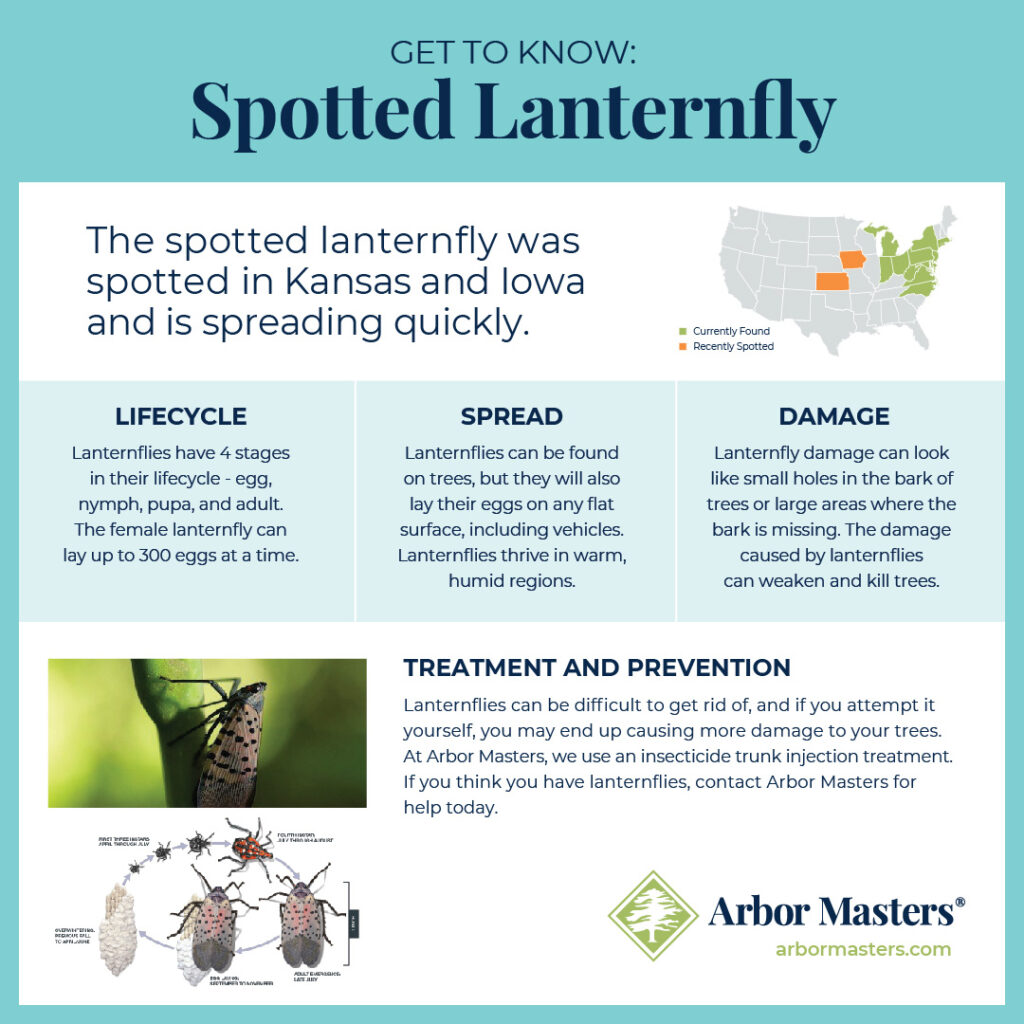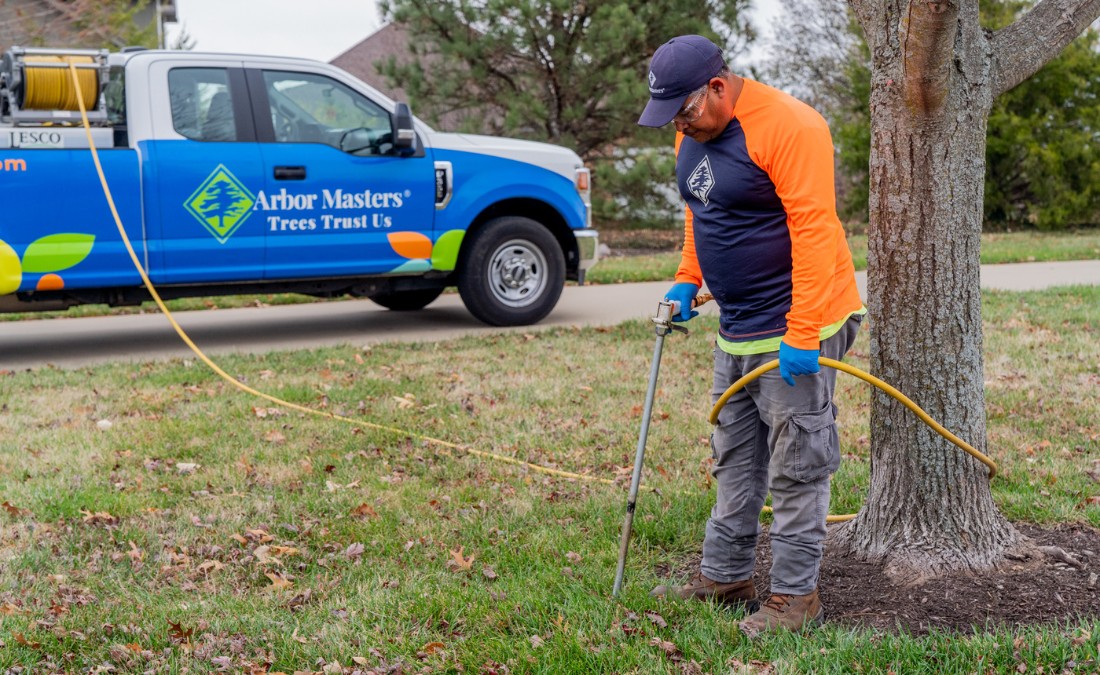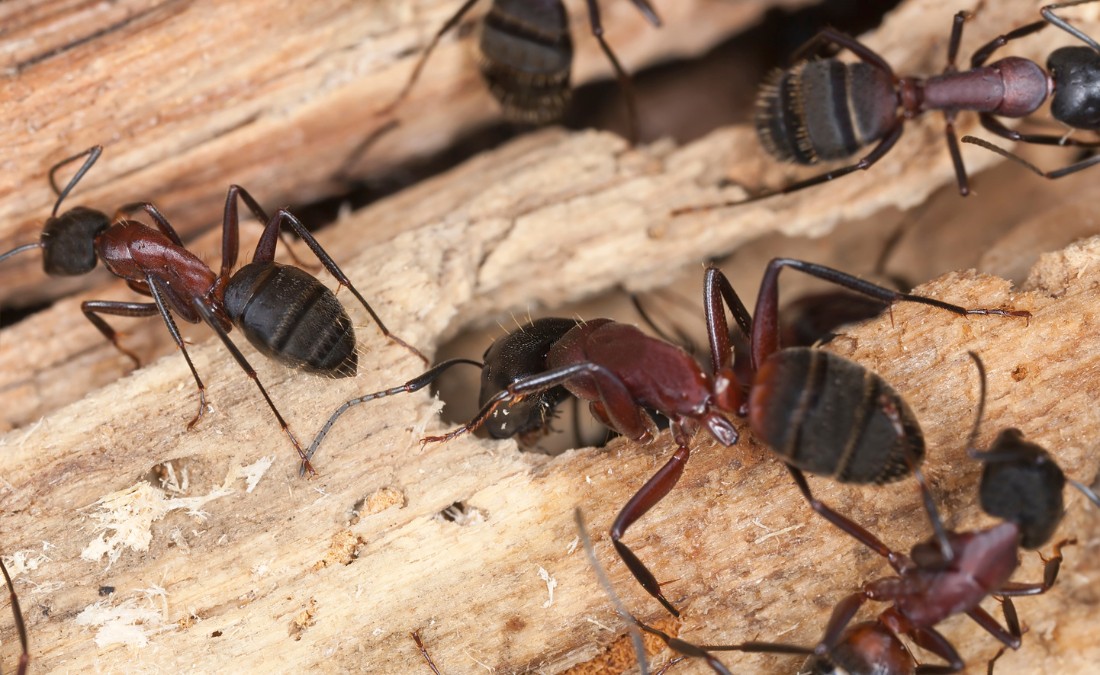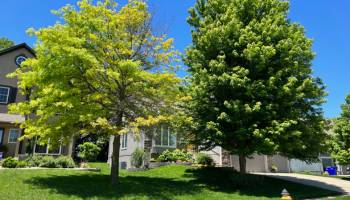Spotted Lanternfly Seen in the Midwest

The Spotted Lanternfly is a type of pest that is known for attacking trees. They have been seen across the northeast United States and are spreading quickly.

What is the Spotted Lanternfly?
The Spotted Lanternfly is a type of pest that is known for attacking trees. They have been seen across the northeast United States and are spreading quickly to Iowa and Kansas. This pest is particularly dangerous because they can lay their eggs on any flat surface, including vehicles, meaning they can spread very easily to new areas.
Spotted Lanternfly lifecycle?
Spotted Lanternflies have four stages in their lifecycle- egg, nymph, pupa, and adult. The female lantern fly can lay up to 300 eggs at a time, which hatch into nymphs within 10 days. Nymphs go through five molting stages before becoming adults. Adults can live for several weeks and mate multiple times.
What do lanternflies look like?
Spotted Lanternflies go through a few changes before adulthood. Early-stage nymphs – commonly found between April and June – are black with eye-catching white spots. As they molt, they gradually develop a bright red body with white spots. Red nymphs are most commonly reported between July and September.
Spotted Lanternflies typically reach adulthood sometime late in the summer. They feature gray forewings with black spots that cover a bright red body. They are 1 inch in length and 1/2 inch wide when resting.
Where can I find Spotted Lanternflies?
Spotted Lanternflies thrive in warm, humid regions, and you can find them on trees and other plants. They will lay their eggs on any flat surface, including vehicles, lawn mowers and bicycles. These hitchhiking eggs are responsible for the spread of the invasive species across the northeast United States. According to the Pennsylvania Department of Agriculture , the Spotted Lanternfly is native to East Asia but have been found in the United States since 2014. The flies have been reported in Salina, Kansas, as recently as 2021 and Dallas County, Iowa in July 2022.
What kind of damage do Spotted Lanternflies cause?
Spotted Lanternflies feed on the sap of trees, which can weaken and kill the tree. To identify tree damage, look for small holes in the bark of trees, or buildup of sooty mold attracting other insects such as wasps, hornets, bees and ants. Trees with Spotted Lanternfly infestations can also give off a fermented odor.
In addition, lanternflies lay their eggs on trees, which can hatch and cause even more damage. After they feed, the Spotted Lanternflies produce a sugary liquid called honeydew. The honeydew creates the perfect environment for sooty black mold to form. This mold is harmless to humans but can continue to damage plant life in its immediate area.
What do Spotted Lanternflies eat?
Spotted Lanternflies use their piercing mouthparts to break through the bark of trees to obtain sap. The flies feed on over 70 different plant species, but, according to the Penn State Extension, the spotted lanternflies prefer grapevines, maple trees, black walnut, birch, and willow trees.
What can you do to prevent Spotted Lanternflies from spreading?
If you see a Spotted Lanternfly, it is important to kill it so that it cannot lay its eggs and spread to new areas. Prevent lanternflies from spreading by not moving firewood or other objects that could be infested with their eggs.
How can I get rid of Spotted Lanternflies?
If you think you have a Spotted Lanternfly infestation, it’s important to contact Arbor Masters for help. Arbor Masters is specially trained in identifying and removing invasive species from our community. Lanternflies can be difficult to get rid of and you may end up causing more damage to your trees. The treatment we use is an insecticide trunk injection. Arbor Masters will be able to help you get rid of lanternflies and protect your trees from further damage. If you have questions, don’t hesitate to contact us. We’re here to help!
Looking for help with your pest control problem? Reach out to the team at Arbor Masters today.

Get the latest local news, tree care tips, special offers, and company updates directly to your inbox! It's easy to subscribe and there's no spam - we promise.
"*" indicates required fields





